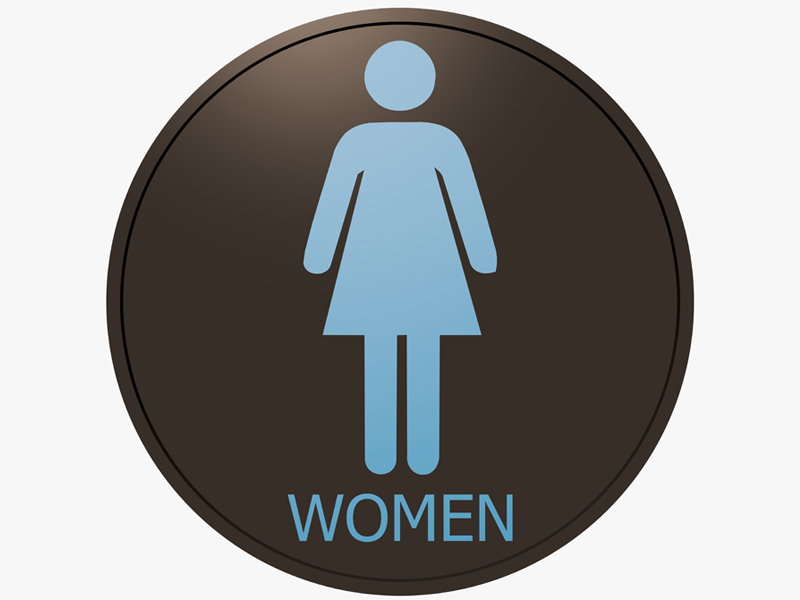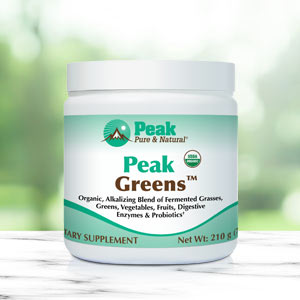Get Easy Health Digest™ in your inbox and don’t miss a thing when you subscribe today. Plus, get the free bonus report, Mother Nature’s Tips, Tricks and Remedies for Cholesterol, Blood Pressure & Blood Sugar as my way of saying welcome to the community!
Is it a UTI or something else?

Few things are as uncomfortable and unnerving as painful urination… or urinary frequency, also called dysuria.
And more than one condition can be the reason for the pain… but most often the blame can be placed on one of three common and treatable conditions: urinary tract infection, non-specific urethritis and interstitial cystitis.
More often as well, women tend to suffer from these conditions frequently compared with men — and it’s mainly because the distance from the urethra to the bladder is a much shorter distance in the female body.
The urethra serves as the gateway to which bacteria can make its way into the body, up to the bladder, and if not stopped, to the kidneys. Once inside, the symptoms are hard to ignore.
Technicalities aside, the first questions my patients ask is what is it and how did I get it… so let’s start there…
Acute cystitis
The symptoms of painful urination, frequency, urgency, or bladder discomfort in a woman most often indicate acute cystitis, a.k.a. UTI (urinary tract infection). And there could be a few causes…
It’s quite common for recent sexual activity to lead to a urinary tract infection so it’s one of the first questions I’ll ask about. I realize some people are a little uncomfortable having that discussion but it’s important. It’s not a reflection on cleanliness or sexual activity — it’s purely that during sex there’s a lot going with friction, bodily fluids and such, and — once again — the urethra is right there in the middle of all of it.
If you find you’re prone to UTIs following sexual activity, there’s one prescription-free thing you can do that save yourself a lot of grief — and that’s to urinate immediately after sex.
That simple act helps flush any bacteria that may have breached your urethra and can save you a lot of irritation if done right away.
But if my patients discomfort is not a result of sexual activity from the previous evening, then I ask patients to consider the other factors at play here, including:
- A shift in vaginal pH: this acid/base balance can be thrown off by increased sweating, stress, or a topical cream/lotion/soap. It could also be from high content of foods that cause an acid metabolism such as sugars, meats, and refined fats (and a relative lack of fresh produce)
- A change of the predominate vaginal bacteria or yeast: yeast is fed by high sugar foods or higher-glycemic foods (e.g. bread, pastas, white rice)
- An irritation around the urethral opening: this could be from tight-fitting or new clothing
- Holding urine too long while traveling, working, etc.
All these lead to bacterial growth where it shouldn’t be… into the urine contents of the bladder.
Typically identifying the cause can help cut down on occurrences in the future and round of antibiotics can prevent a simple urinary tract infection from becoming more. Lots of water and cranberry juice can help too.
Note: If you take antibiotics for a urinary tract infection, be careful to finish your prescription so you don’t inadvertently contribute to the growing threat of antibiotic resistance.
In approximately half of symptomatic patients with a dip urinalysis consistent with bacterial infection, I also send their urine for a 3-day culture. But only about half of these even grow out a predominate bacterial strain. This indicates they don’t have infected urine. Instead, their symptoms are consistent with urethritis, which is pain in the tube that empties the bladder…
Urethritis
When a routine urine culture doesn’t show bacterial growth, we have to consider other causes for pain in the urethra. First, there are the atypical organisms that can cause it. Sexually-transmitted infections such as gonorrhea and chlamydia can also cause it. So can stealthy bacteria such as ureaplasma and mycoplasma. Bacterial vaginosis (caused by gardnerella vaginalis), less common bacterial mixtures, yeast, trichomoniasis, and even herpes simplex type-2 can cause urethral pain. With rapid tests and cultures these can be identified and addresses.
Less commonly, urethral pain can be from irritation. There are a multitude of causes for irritation of this sensitive skin area, from sex to urinary leakage to topical ingredients.
But if not of these culprits are to blame, and my patient is nearing menopause, there’s one more condition to consider…
Interstitial cystitis
It is estimated that nearly one million Americans (90% women) have interstitial cystitis (IC). And if it comes on, it’s typically around the age 40.
Interstitial cystitis (IC) can seem like a chronic urinary tract infection, except without any bacterial infection. In time, irritation of the bladder leads to scarring, stiffness, and bleeding of the bladder wall. In addition to usual UTI symptoms, the patient with IC can experience bladder/urethral pain with sexual and other physical activity. It is commonly associated with fibromyalgia syndrome (FMS) and/or irritable bowel syndrome (IBS).
The diagnosis of IC is typically made by a urologist, after excluding infection and rarer causes such as kidney stones, endometriosis, tuberculosis, a neurological disorder, or radiation. The urologist can also directly visualize the inside lining of the bladder (cystoscopy) and test function.
What causes IC? That’s the million-dollar question. Mainstream medicine considers IC to be an idiopathic illness — meaning “cause-unknown.”
But, like any difficult chronic illness, there are contributors to IC to consider…
First, you should know that your parasympathetic nervous system is what controls your bodily functions of urination — and bladder contraction. BTW, it also controls salivation, lacrimation, defecation, and emesis. This parasympathetic nervous system is an “automatic” thing, but is greatly influenced by your feeling state. Let me explain.
For example, when you are nervous, your salivation dries up, tears may dry up, bowels may need to move, nausea may occur, and your urge to pee may increase. This is why it makes sense that stress plays a big role in IC.
Another interesting finding is that the inside lining of your bladder, called the urothelium, generates its own ATP naturally, 1 which also contributes to contraction. ATP is that famous molecule that provides energy to muscles and tissues.
Therefore, when I list causes of IC below, you may see similarities with all the other “idiopathic” (no known cause) illnesses:
- Autoimmune disorders: there is an unexplained association of IC with other autoimmune diseases such as systemic lupus erythematosus (SLE), Sjogren’ssyndrome, inflammatory bowel disease (IBS), and scleroderma.
- Allergy: much of allergy is delayed-type sensitivity, and may be caused by foods or chemicals in your environment
- Stress; stress reduction can help alleviate symptoms the are mediated through the parasympathetic nervous system as mentioned above
- Smoking: greatly contributes to bladder cancer — and likely to IC as well
- Chronic repeated over-distention (holding your pee)
- Sexual, physical or childhood abuse
Editor’s note: Did you know that when you take your body from acid to alkaline you can boost your energy, lose weight, soothe digestion, avoid illness and achieve wellness? Click here to discover The Alkaline Secret to Ultimate Vitality and revive your life today!
[1] Andersson KE. Purinergic signaling in the urinary bladder. Auton Neurosci. 2015 Sep;191:78-81.













